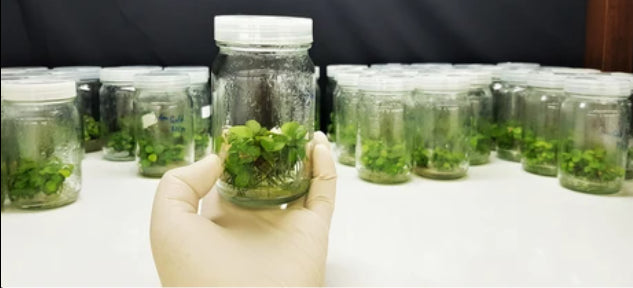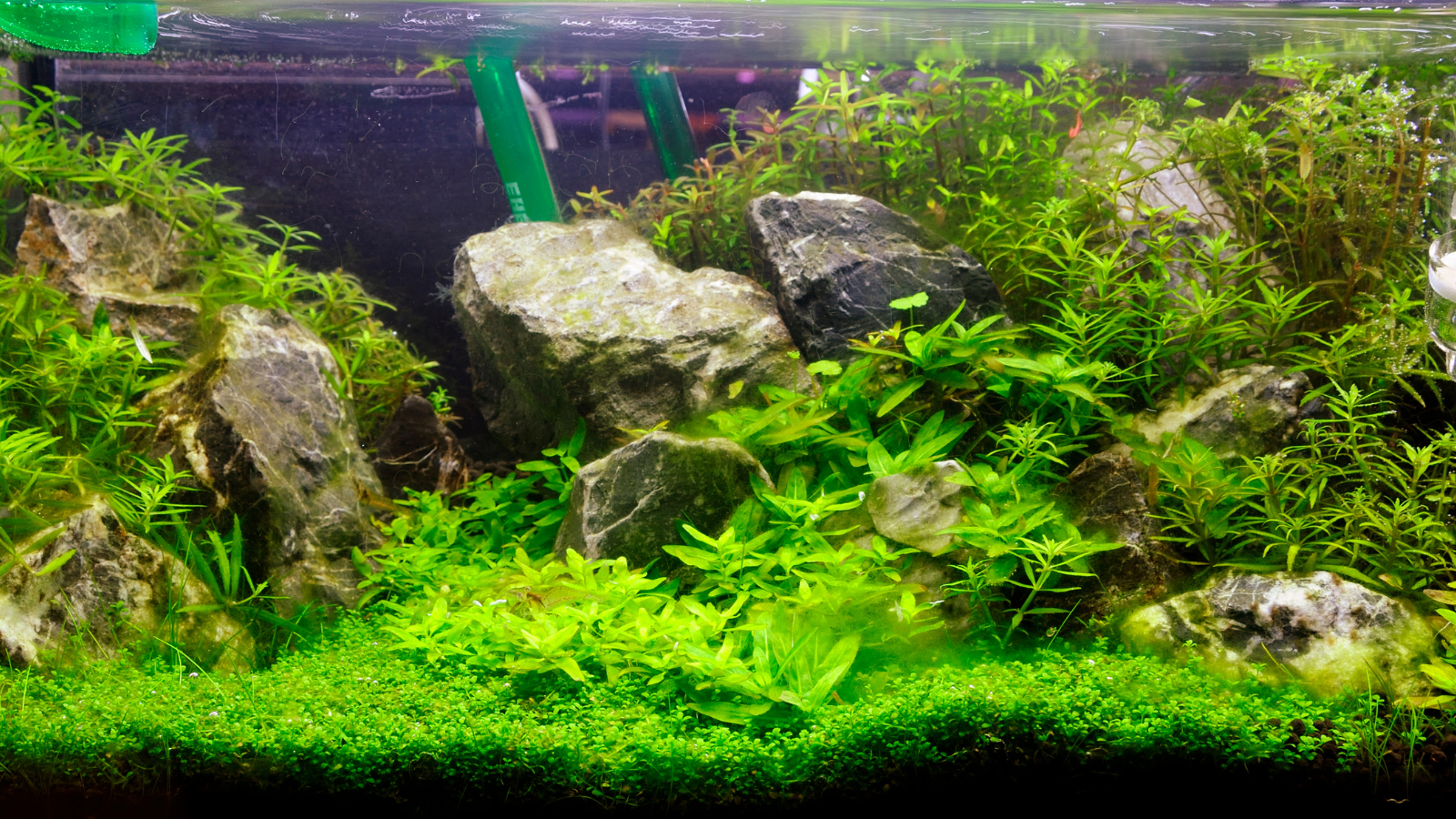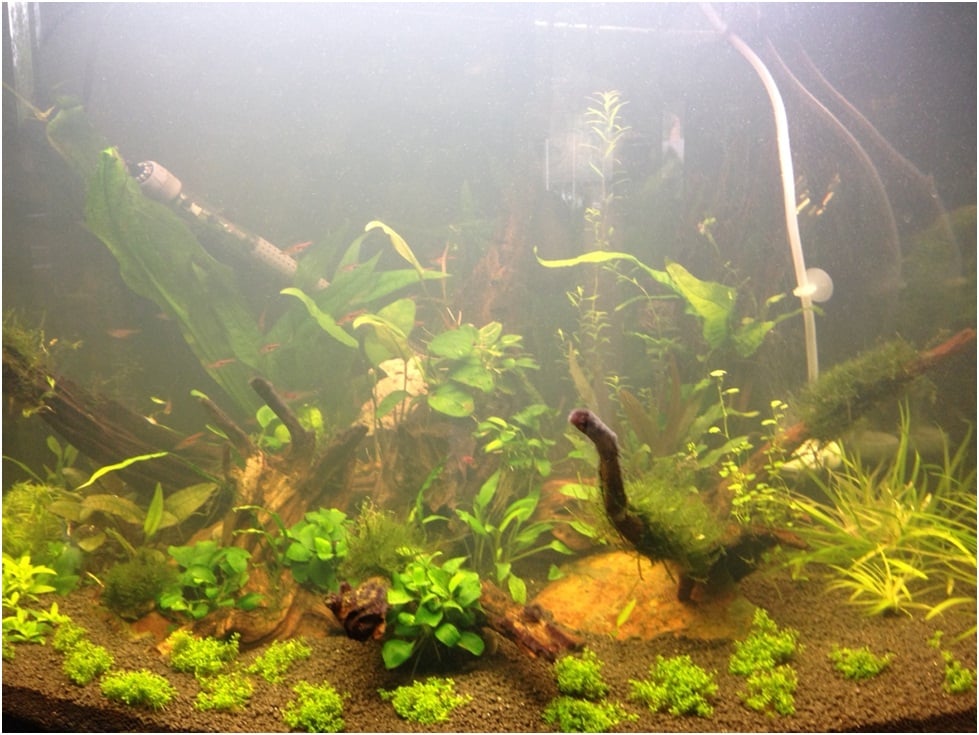
In vitro aquarium plants
In vitro aquarium plants can already be purchased in many pet stores. They are a great alternative to plants in baskets with mineral wool. As you might expect, they are gaining more and more followers, both among sellers and customers. What is their phenomenon? These are aquarium plants that facilitate the work of sellers and encourage buyers with their advantages. Although for many people plants in the gel are new, the history of their production goes far back in the past. In vitro technology began to be used for commercial plant production in the second half of the 20th century. Ornamental and cultivated plants were mainly propagated.
The cells from which plants are made have a huge regenerative potential. Theoretically, a complete plant can be obtained from every single cell! By placing a sterile plant fragment (devoid of any bacteria, fungi, and viruses by appropriate techniques) in the gel, we can obtain from a few to several dozen new shoots.
This is a result that cannot be achieved in a planted aquarium or plantation. The nutrient gel is a mixture of macro-and microelements, plant growth regulators, agar, and other substances necessary to grow aquarium plant. An individual gel recipe must be selected for each species. It is quite tedious work, but the effects are something to be proud of when after a month we get several dozen plants ready for planting in the aquarium from a piece of a stem or a leaf. The obtained aquarium plants are genetically exact copies of the parent plant. Only the best individuals from the population are selected for in vitro reproduction so that only the elite can be reproduced in sterile conditions. They must be healthy plants, characterized by vigorous growth and disease resistance. With this method, it is possible to obtain a huge number of copies of a selected plant species in a very short time.
Benefits for stores
First of all, in vitro aquarium plants win in terms of storage, the form in which they are sold, and reducing the involvement of the seller! These aquarium plants are easy to store and display on a store shelf. By following a few simple tips, you can store them for up to several weeks without any loss in quality! The most important thing is temperature. In general, it can be said that the cooler the place of storage of plants, the longer their life span. It is related to the reduction of plant metabolism. Despite the fact that they are in a plastic cup and practically do not grow anymore, they carry out basic life processes all the time, including respiration, excretion of secondary metabolites into the medium - the gel, which in high concentration lead to its browning. If the temperature is low, plants metabolize much slower and excrete metabolites into the nutrient medium more slowly. The storage time is extended. The optimal temperature is 18-20 ° C. Plants should also be provided with an adequate amount of light. It is recommended to use a light source of approx. 3250 lumens per square meter of the shelf. An ordinary industrial fluorescent lamp or LEDs will also fulfill this task.
There is a group of aquarium plants that are not so easy to grow and are only offered in the gel. Why? In a cascade, these plants would "spoil" very quickly due to usually poor fertilization, no CO2 application, and too little lighting. Simple and difficult gel-form plant species are just as easy to store! Species with extremely opposite requirements in an in vitro aquarium can be stored on the same shelf. The cups with the plants cannot be opened. If outside air gets inside along with bacteria, fungi, they will start to use the nutrients in the gel for their own growth. It should be remembered that plant cells divide much more slowly than fungi and bacteria. As a result, fungi easily win the competition for nutrients and the contents of the container may simply become moldy. Aquarium plants in the gel do not need to be watered. They do not need to be cleaned of algae because they do not have them and until you put them in the aquarium, they can not appear on them. Once placed on the shelf, they can wait for purchase, just like fish food, fertilizer, or other products.
Storing plants in baskets in the traditional "cascade" manner is quite costly and time-consuming. It requires a significant expenditure on electricity (lighting, aquarium filtration), as well as the consumption of large amounts of water and service work when cleaning the display tanks. Very often the plants are arranged densely, and in such conditions the access of light to the lower parts of the plants is limited. Plants begin to lose leaves, become unattractive to customers because of brown leaves, and ultimately generate losses. Transparent packaging in which IVF plants are sold allows the buyer to see and evaluate the quality of the goods, and then make right choices about purchasing the most beautiful specimens. In the case of plants in a basket, the customer cannot see a specific speciment. He has to ask the seller for help. Although the plants in the baskets are labeled, the description is usually on the back. The customer is unable to read information about the plant's requirements from the label without asking the seller. Labels placed on the packaging of in vitro plants contain the necessary information, which significantly facilitates the aquarist's decision-making process. Additionally, the degree of difficulty is marked with different colours.
The costs associated with the storage of aquarium plants in the gel are limited only to the consumption of electricity for lighting. We reduce the costs of water consumption, the seller's work on the cascade service, advising the right plant for the customer, taking the plants out of the water, packing in plastic bags. A plant in a gel can sell itself!
Customer benefits
In vitro plants are plants not only for advanced aquarists but also for beginners. A wide range of plants offered by producers, in addition to these demanding species, also includes easy ones. Everyone can choose something for themselves. The huge amount of plants in a portion in vitro compared to a portion in a basket also encourages the customer. The lack of algae, snails, or other undesirable organisms is an advantage that does not need to be recalled. In-vitro plants are characterized by quick preparation for planting. Just take them out of the container, rinse the gel under running water, and after a while, the plants are ready for planting. Then, using tweezers, place the seedlings in the substrate. When preparing plants in the basket, get rid of the mineral wool. It would seem that there is nothing difficult about this, but in fact, to get rid of the mineral wool completely, we must damage the root system. Many plants are sensitive to this, such as species of the genus Cryptocoryne. Pulling the wool from the roots is also a much more time-consuming activity than washing out the gel. Moreover, gel plants take a form very similar to that of an underwater plant. This makes acclimatization much easier. The plant does not have to transform and shed its leaves from the immersive form.
When buying plants in baskets, the aquarist must immediately plant them in the tank or store them in a tank other than the target tank, if he decides to set up a tank from scratch and has not yet completed the full stock. This is sometimes troublesome, especially if there are no appropriate storage conditions, and one must keep them, for example, in a bucket of water (and be aware that water change is not a very common activity in stores). It also affects the quality of the plants, which deteriorates very quickly under such conditions. It is much easier to complete the cast with IVF. You can store a purchased cup with plants on a desk, a shelf under a lamp, or on a windowsill for several days. This is enough to purchase all selected species.
Benefits for the environment
In the traditional aquarium plant production route, the plants in gel from the laboratories go to the greenhouse, where they are transferred to mineral wool baskets. This is the stage of the plant's acclimatization and growth. Plants from in vitro cultures are very well-nourished and prepared for rapid growth in greenhouse conditions. From the greenhouse, the plants go to wholesalers, and then to aquarium stores and our aquariums. When choosing plants in the gel, we choose plants from the first link in the production chain leading to the consumer. Hence such an excellent price for a huge amount of excellent quality seedlings. One cup can contain even over a thousand seedlings! These are not all the advantages. In addition to the absence of any parasites, fish diseases, algae spores, and snail eggs, much less water is used in the production of in vitro plants than in greenhouse cultivation. Less than 100 ml of water per month is enough to obtain several dozen to several hundred plants! Greenhouse cultivation occupies huge areas.
In the laboratory, aquarium plants are grown on multi-level racks, thanks to which the space savings are huge. The more cultivation levels, the more land is saved. Thanks to maintaining sterility in production, all the elements administered to plants are absorbed only by them. They are not used by any microorganisms, algae, or pests of greenhouse crops. Moreover, in the laboratory, there is no need for spraying, which is necessary for growing plants in baskets. Many organisms in the aquarium, especially shrimp, are very sensitive to this type of chemistry. Plants grown in greenhouses must therefore be rinsed under running water before placing in the aquarium. In the case of in vitro specimens, there is no such need and can be placed in the tank immediately.
To sum up, let’s show the advantages of in-vitro plants:
Store Benefits include:
- long shelf life
- low storage costs
- they do not take up much space in the store
- do not generate losses
- they are maintain- free, require minimal attention and care
- they do not lose their quality (and appearance)
- less work for store staff
- do not require a special aquarium (cascades) to display plants
-increasing sales
Aquarists benefits include:
- a large number of seedlings at a good price
- the plants are sterile (no snails, bacteria, fungi, etc.)
- easy to plant
- they catch on quickly
- they do not grow emersed (above the water surface)
- they start growing right away
- they can be stored in cups until the aquarium is fully stocked


